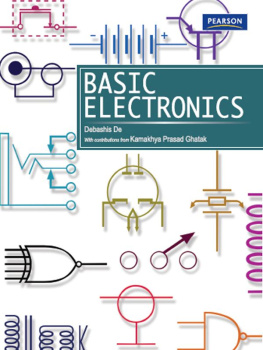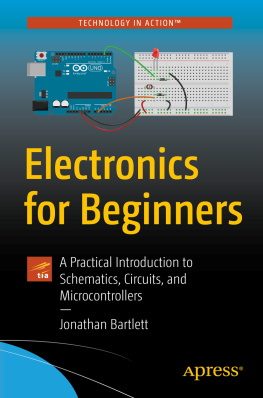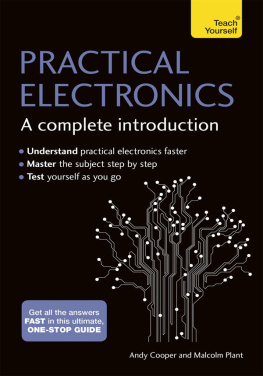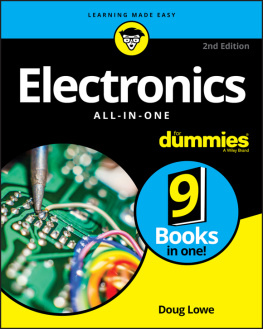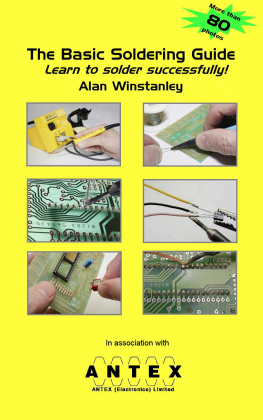Debashis De - Basic Electronics
Here you can read online Debashis De - Basic Electronics full text of the book (entire story) in english for free. Download pdf and epub, get meaning, cover and reviews about this ebook. year: 2010, publisher: Pearson Education India, genre: Computer. Description of the work, (preface) as well as reviews are available. Best literature library LitArk.com created for fans of good reading and offers a wide selection of genres:
Romance novel
Science fiction
Adventure
Detective
Science
History
Home and family
Prose
Art
Politics
Computer
Non-fiction
Religion
Business
Children
Humor
Choose a favorite category and find really read worthwhile books. Enjoy immersion in the world of imagination, feel the emotions of the characters or learn something new for yourself, make an fascinating discovery.
- Book:Basic Electronics
- Author:
- Publisher:Pearson Education India
- Genre:
- Year:2010
- Rating:5 / 5
- Favourites:Add to favourites
- Your mark:
- 100
- 1
- 2
- 3
- 4
- 5
Basic Electronics: summary, description and annotation
We offer to read an annotation, description, summary or preface (depends on what the author of the book "Basic Electronics" wrote himself). If you haven't found the necessary information about the book — write in the comments, we will try to find it.
Basic Electronics — read online for free the complete book (whole text) full work
Below is the text of the book, divided by pages. System saving the place of the last page read, allows you to conveniently read the book "Basic Electronics" online for free, without having to search again every time where you left off. Put a bookmark, and you can go to the page where you finished reading at any time.
Font size:
Interval:
Bookmark:
Debashis De
With contributions from
Kamakhya Prasad Ghatak

Delhi Chennai Chandigarh
Dedicated to
Richard Phillips Feynman,
the father of nanotechnology
Basic Electronics has been written to serve as a textbook for core science and technology courses in engineering colleges and universities. This book is not only useful for students of science and technology, but also for readers from other fields aspiring to enhance their knowledge of electronics through self-study. The objective of the book is to develop the basic ability to understand electronics as a science that forms the core of engineering and technology in general. The basic prerequisite for those using this book is the alert mind. The required physics and mathematics has been developed throughout the book, and no prior knowledge of physical electronics has been assumed.
builds the foundation of electronics with a detailed analysis of crystalline materials, classification of materials, intrinsic and extrinsic semiconductors, electrical conduction phenomenon, continuity equation and the Hall Effect. The book then proceeds to focus on the major categories of electronic devicesthe diode, bipolar junction transistor and field-effect transistorwith two chapters devoted to each device.
discusses the conceptual development of feedback in amplifiers through block diagrams, properties of positive and negative feedback, calculations of open-loop gain, closed-loop gain, feedback factors, topologies of feedback amplifier, the effect of feedback on gain, input impedance and output impedance, practical implementation of the feedback topologies, sensitivity, bandwidth stability and the effect of positive feedback.
is devoted to a detailed examination of the working principle of an oscillator, the various classifications of oscillators along with a detailed examination of Barkhausen criteria.
, deals with the key instruments of electronic measurement with special emphasis on the most versatile instrument of electronic measurement, the cathode-ray oscilloscope.
Simplicity is the key word when it is a question of building a foundation. The hallmark of this book is the presentation of the most complex theories in a manner that facilitates a lucid understanding of the fundamentals while establishing the platform for the next phase of subject development. Through simple language and clear-cut presentation, the book presents electronics intelligently.
There are numerous books on this subject, with a varying degree of depth and coverage that map the courses on electronics as offered by different institutions. This book emphasizes the importance of observing the applications by concentrating on the fundamentals. This approach will sustain an efficient assimilation of concepts in a coherent way. The primary aim of writing Basic Electronics is to establish a strong foundation in electronics and provide tools for self-assessment and further learning.
To complement the attempt at providing a student-friendly text, a comprehensive learning package has been combined with this book. Each chapter ends with: Important Formulae, Points to Remember, Objective Questions, Review Questions, Practice Problems and Suggested Readings. The companion Web site features a comprehensive lesson plan for instructors, which allows them to design and modify courses. An evaluation module for the students allows them to assess their progress. And a unique set of animated representations of key circuits and their functions, which makes the learning process simpler.
The final form in which Basic Electronics has been presented here would not have been possible without the feedback received from our reviewers. While we could not incorporate every suggestion from our reviewers, we do acknowledge that their feedback was invaluable in our attempt at creating the best possible basic electronics textbook.
Consultant Board
Our Consultant Board provided us with a critical and unbiased analysis of each chapter. We would like to thank the following for their time and commitment:
Kumar N Krishna Murthy
Faculty
Electronics and Communication Engineering
PES College of Engineering, Mysore
Asawari Dudwadkar
Lecturer
Vivekanand Education Society
Institute of Technology
Sitangshu Bhattacharya
Research Associate
Nanoscale Device Research Laboratory
Centre for Electronics Design and Technology
Indian Institute of Science, Banglore
Reviewers
The suggestions and thoughtful recommendations of many helped us further improve the quality of this book. We are grateful for the cooperation we received from the following reviewers:
Abhijit Asati
Lecturer, EEE Group
BITS, Pilani
Dr. (Mrs) Rajeevan Chandel
Assistant Professor and Head
Department of Electronics and Communication Engineering
Coordinator SMDP-II
National Institute of Technology (NIT) Hamirpur
Aniruddha Chandra
Lecturer, ECE Department
NIT Durgapur
Professor Devaraju
Chairman, Electronics Department
Bangalore University
Sanjay Dhar Roy
Senior Lecturer, ECE Department
NIT Durgapur
Dr. M. K. Kowar
Dean (Faculty of Electronics, Electrical, Computer Science and Engineering)
Chhattisgarh Swami Vivekanad Technical University
Professor P. K. Sahu
NIT, Rourkela
Gagan Singh
Associate Professor and Head
EE Department, DIT Dehra Dun
Dr. Shree Prakash Singh
Division of ECE
NSIT, Dwarka
Sonika Singh
Assistant Professor
ECE Department, DIT Dehra Dun
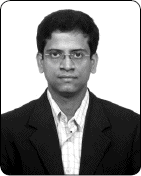
Debashis De studied radio physics & electronics and obtained his Ph.D. from Jadavpur University in 2005. He is currently Reader at the Department of Computer Science and Engineering, West Bengal University of Technology. With research interests in the field of semiconductor nanostructures, Dr De has more than 30 publications in international journals and conferences to his credit. In 2005, URSI awarded him with the International Young Scientists Award. In 2008, he was invited as a Post Doctoral Endeavour Research Fellow to the University of Western Australia, Perth, Australia, and the Australian Government awarded him with the Endeavour Award for research and professional development. He is currently an Adjunct Research Fellow at the University of Western Australia. Dr De has co-authored Einstein Relation in Compound Semiconductors and Their Nanostructures with Professor K. P. Ghatak. His current research topic includes theoretical and simulative investigation of different electronic and transport properties of armchair and zigzag nanotubes, nanoscale transistors, quantum wells, wires, dots, superlattices,
Font size:
Interval:
Bookmark:
Similar books «Basic Electronics»
Look at similar books to Basic Electronics. We have selected literature similar in name and meaning in the hope of providing readers with more options to find new, interesting, not yet read works.
Discussion, reviews of the book Basic Electronics and just readers' own opinions. Leave your comments, write what you think about the work, its meaning or the main characters. Specify what exactly you liked and what you didn't like, and why you think so.

